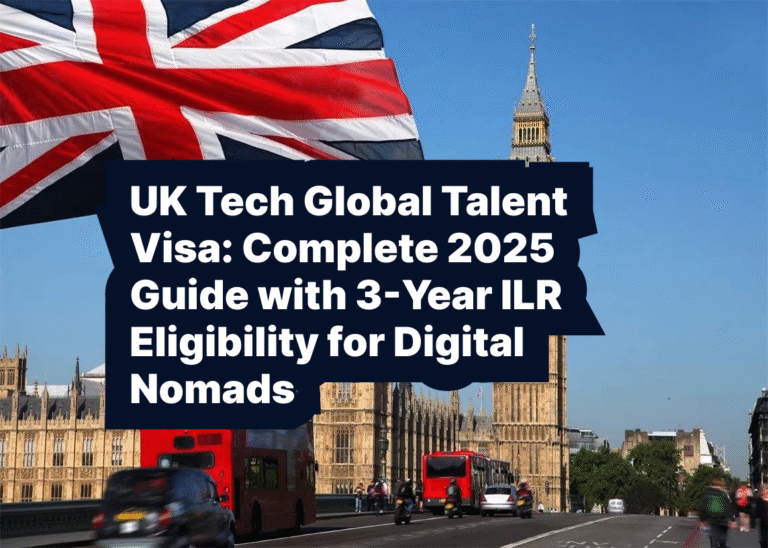The United States has long been a powerful magnet for global talent, offering the promise of career advancement, a vibrant culture, and a high standard of living. For many, the idea of securing a job, such as a store assistant, with the added benefit of visa sponsorship and a high salary, seems like an ideal entry point. However, the American immigration system is highly complex, and the reality for low-skilled and low-paying jobs is significantly different from this common misconception. This comprehensive guide will provide a detailed, honest, and realistic overview of the U.S. labor market, the intricacies of the U.S. visa system, and strategic alternative pathways for individuals with store assistant experience to build a successful life and career in the United States. It is a journey that requires careful planning, a clear understanding of the rules, and a willingness to redefine your career trajectory.
The H-1B Visa for Store Assistants
The H-1B visa is the primary visa used by U.S. employers to hire foreign workers in “specialty occupations.” A specialty occupation is defined as a job that requires a professional to have a bachelor’s degree or its equivalent in a specific, related field as a minimum for entry.
- Educational Requirement: The job itself must require a bachelor’s degree or a higher degree. A store assistant position, by its very nature, does not meet this requirement. Employers in the retail sector do not require a bachelor’s degree to hire a sales associate.
- Prevailing Wage: The employer must pay the H-1B employee the prevailing wage for that occupation in the geographic area, or the actual wage paid to other workers with similar experience, whichever is higher. Even if a store assistant job were to somehow qualify, the prevailing wage for a “specialty occupation” is far higher than the typical salary for a retail sales associate. The median annual compensation for H-1B workers is over $118,000, which is more than triple the average salary of a store assistant.
- Annual Cap: The H-1B visa is also subject to an annual cap, making the process highly competitive. Every year, more petitions are filed than there are available visas, necessitating a lottery system. An employer would not go through the complex and costly process of sponsoring an H-1B visa for a store assistant role, as the petition would be immediately rejected for not meeting the core requirements.
This fundamental incompatibility between a store assistant’s job duties and the H-1B visa requirements means that a direct path to employment-based immigration for this role is not a viable option. Therefore, a successful strategy must look at alternative visa categories and career paths.
A Strategic and Realistic Path Forward
Given the realities of the U.S. immigration system, a person with store assistant experience must adopt a new approach. The goal is not to find a “store assistant job with visa sponsorship,” but rather to leverage that experience to qualify for a visa that will allow you to work and live in the U.S. This involves either upskilling for a higher-level role or using non-immigrant visas as a stepping stone.
Step 1: Rethink Your Professional Identity and Goals
Your experience as a store assistant is a valuable asset, but it is a starting point, not a final destination on your immigration journey. Your skills in customer service, sales, and retail operations are highly transferable to more skilled and visa-eligible roles.
- Retail Management: A strategic move would be to gain experience in a leadership capacity. A store manager or assistant manager role, for example, often requires a higher level of responsibility and may be classified as a “specialty occupation” by some companies, particularly large multinational corporations.
- Specialized Sales: If you work with a specific product, such as electronics, medical equipment, or luxury goods, you may be able to transition to a sales role that requires technical or specialized knowledge. These positions often require a bachelor’s degree and are more likely to qualify for an H-1B visa.
- Corporate Roles: Consider a transition to a corporate-level role within a retail company. Positions in marketing, supply chain, human resources, or IT are highly skilled and routinely sponsored by large companies.
- Education: A crucial and very common pathway to the U.S. is through education. An F-1 student visa allows you to study at a U.S. university or college. This provides a direct path to obtaining a U.S. degree, which is a prerequisite for most work visas. Post-graduation, you may be eligible for Optional Practical Training (OPT), which allows you to work in your field of study for a period of time, giving you a chance to gain U.S. work experience and potentially find an employer willing to sponsor a long-term visa.
Step 2: Explore Alternative Visa Categories
While the H-1B visa is the most common, other visa types may offer a temporary or exchange-based path to the U.S.
- J-1 Exchange Visitor Visa: This visa is designed for educational and cultural exchange programs. It has several subcategories, and some, like the Summer Work and Travel program or the intern/trainee programs, may be relevant to your experience. The J-1 visa does not lead to permanent residency, but it can be a way to gain valuable U.S. work experience and build a professional network.
- H-2B Visa: The H-2B visa is for temporary, non-agricultural workers. These are typically seasonal jobs, and the visa is valid for one year, with limited extensions. While a store assistant role could technically fall under this category, it is not a pathway to a permanent career. Furthermore, the number of H-2B visas is capped annually, and the process is lengthy and requires a sponsoring employer to prove a temporary need.
- L-1 Visa (Intracompany Transferee): If you work for a large multinational company with a presence in both your home country and the U.S., you may be able to transfer on an L-1 visa. This requires you to have worked for the company abroad for at least one year in a managerial, executive, or “specialized knowledge” capacity. A store assistant role would not qualify, but a manager or supervisor role might.
Step 3: Master the Application and Interview Process
Once you have identified a realistic pathway, your application must be flawless.
- Resume (CV): The U.S. resume format is typically one page and is highly focused on quantifiable achievements. Use strong action verbs and data to showcase your accomplishments. For example, instead of “Helped customers,” write “Increased customer satisfaction by 15% through personalized service.”
- Cover Letter: Use your cover letter to explicitly address why you are a good fit for the company and the role, and why you are seeking a sponsored position. Be professional and confident.
- Networking: In the U.S., networking is incredibly important. Use LinkedIn to connect with recruiters and professionals in your target industry. Informational interviews are a common practice and can lead to job opportunities.
- Interviewing: U.S. interviews are often behavioral, focusing on how you handled past situations. Prepare for questions using the STAR method (Situation, Task, Action, Result) to provide clear and compelling examples of your skills.
Step 4: The Visa Application Process
The visa application process is almost always initiated by the employer. They will petition U.S. Citizenship and Immigration Services (USCIS) on your behalf.
- LCA (Labor Condition Application): For an H-1B visa, the employer first files a Labor Condition Application with the Department of Labor. This certifies that they will pay the prevailing wage and are not displacing U.S. workers.
- Form I-129: Once the LCA is certified, the employer files a Petition for a Nonimmigrant Worker (Form I-129) with USCIS.
- Visa Interview: If the petition is approved, you will attend a visa interview at a U.S. embassy or consulate in your home country. Be prepared to answer questions about your background, the job, and your intentions for returning home after your visa expires.
Settling as an Immigrant in the U.S.
Successfully navigating the immigration process is a monumental achievement, but the journey to settling in a new country is equally important.
Initial Practicalities
- Social Security Number (SSN): This is essential for working and paying taxes. You can apply for an SSN after you arrive in the U.S. and have your visa and Form I-94.
- Bank Account: Open a bank account with a major U.S. bank (e.g., Chase, Bank of America, Wells Fargo).
- Accommodation: The U.S. housing market is highly regional. Research rental costs in your area and be prepared for security deposits and credit checks.
- Driving: If you plan to drive, you will need to get a U.S. driver’s license. The process varies by state.
- Taxes: The U.S. has a complex tax system. Seek advice from a professional to understand your tax obligations, including federal and state income taxes.
- Healthcare: Unlike many countries, the U.S. does not have a universal healthcare system. Your employer will likely offer health insurance, and you should enroll as soon as you are eligible.
Cultural and Social Integration
- Workplace Culture: U.S. workplaces are often fast-paced and value direct communication. Be proactive, show initiative, and be prepared to take on new responsibilities.
- Building a Network: Join professional associations, attend industry events, and use online platforms to build connections. A strong professional network is crucial for career progression in the U.S.
- Community Engagement: Find local clubs, volunteer opportunities, or social groups that align with your interests. This is an excellent way to meet people and feel more at home.
- Learn the Local Nuances: The U.S. is a vast country with diverse cultures. Learn about the unique customs and traditions of the state or region where you are living.
Comparison Table: The Perception vs. The Reality
This table highlights the significant differences between a common perception of a direct pathway and the strategic, realistic approach required to immigrate to the U.S.
| Feature | Common Perception (Not Viable) | Strategic & Realistic Path | Permanent Residency Path |
|---|---|---|---|
| Job Title | Store Assistant | Retail Manager, Sales Specialist, Corporate Staff | Store Manager, Regional Manager |
| Visa Type | H-1B Visa for Store Assistant | F-1 Student Visa, J-1 Visa, or H-1B for a Specialty Occupation | Employment-Based Green Card (EB-2/EB-3) |
| Salary | Low, often at or near minimum wage, well below visa thresholds. | Varies, but must be at or above the prevailing wage for a specialty occupation. | Varies, but generally well-compensated for the role. |
| Visa Sponsorship | Extremely Unlikely. Employers do not sponsor low-skilled roles for H-1B. | Possible. Employers may sponsor a specialty occupation or a student visa. | Possible. Employer petitions on your behalf after a period of employment. |
| Required Degree | None for the job; a bachelor’s degree is a visa requirement but not for the job. | A bachelor’s degree or higher is required for the job and the visa. | A bachelor’s or advanced degree is typically required. |
| Application Process | Employer files a petition, but it would be rejected immediately by USCIS. | F-1: University application. H-1B: Employer files a petition after a job offer. | Employer files a PERM labor certification and an immigrant petition (I-140). |
| Primary Challenge | The fundamental mismatch between the job and the visa requirements. | Gaining the necessary skills or education to qualify for a specialty occupation. | The extensive wait times and complex legal processes. |
| Final Outcome | No visa, no path to permanent residency. | A temporary stay with a potential to transition to a longer-term visa. | A permanent resident visa (Green Card) allowing you to live and work indefinitely. |
A New Perspective on the American Dream
The journey to working and living in the United States as an immigrant requires a profound shift in perspective. The myth of a simple “store assistant job with a high salary and visa sponsorship” is an illusion, but it is one that, once understood, reveals a more compelling and achievable reality.
The U.S. offers unparalleled opportunities for those who are willing to strategically plan their career and immigration path. By focusing on education, upskilling for a specialty occupation, and leveraging your existing skills, you can transform your ambition into a tangible plan. Whether through a student visa that serves as a bridge to a professional career or by gaining a higher-level role within the retail sector itself, the path to a high-paying job and a permanent life in the U.S. is within reach.
Your experience in retail is a valuable foundation. It teaches you the core skills of customer service and sales that are essential in any business. But to achieve the American dream of a prosperous and stable life as an immigrant, you must build upon that foundation with education, strategic career choices, and a deep understanding of the immigration process. The U.S. is a land of opportunity, but it is an opportunity that belongs to the skilled, the prepared, and the strategic.







